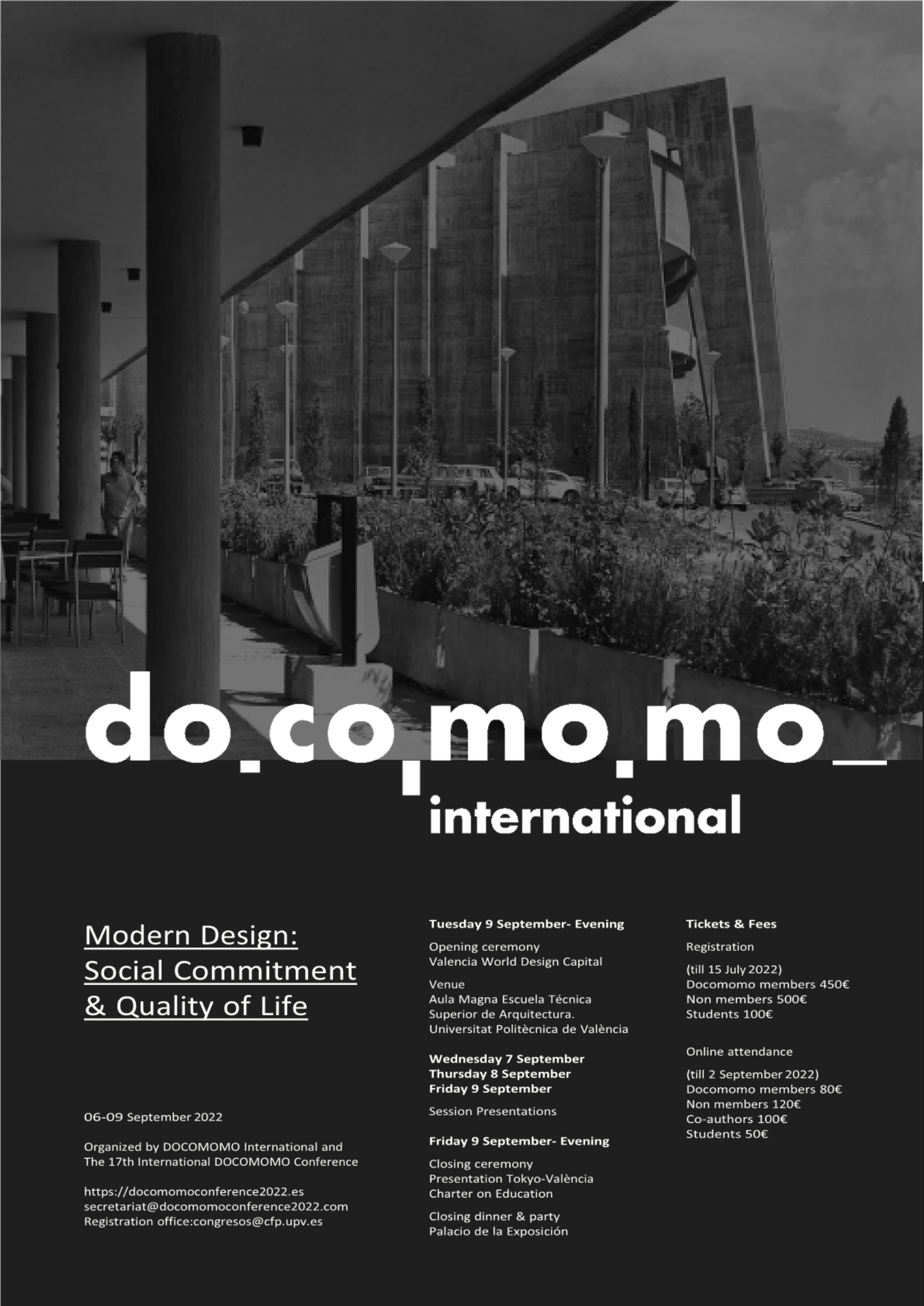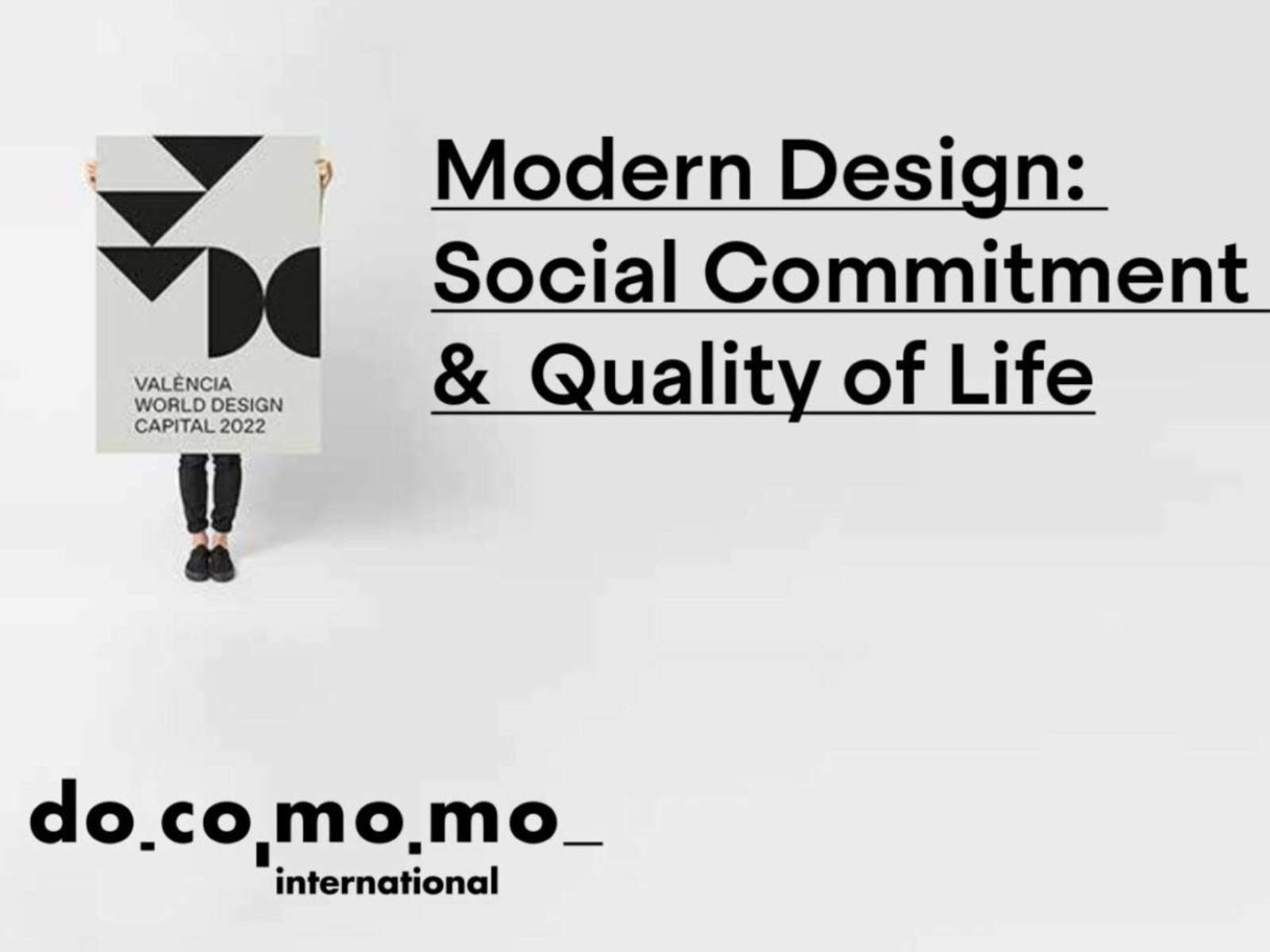The Universitat Politècnica de València, through the School of Architecture is presenting the 17th Docomomo International Conference, to be hosted in València, Spain, September 6-9, 2022.
Directed by Carmen Jordá and Maite Palomares, the conference is included in the official programme of València World Design Capital 2022 and is the most important event as far as architectural design is concerned.
The Conference theme, “Modern Design: Social Commitment & Quality of Life” aims to present the Modern Movement’s legacy in a wider context, not simply individual architects or buildings, but the values of the Modern Movement and their impact on society in general. The conference is organized through five sections, analysing the specific contributions of Avant-Gardes, Latin America, Women, Iberia, and the Internationalization of Modern Movement Designs.
During the conference, invited speakers, recognized specialists in modern design will be making their own personal contributions to the general theme. Those individual viewpoints will provide us with a global perspective of how modern design and its complementary aspects developed.
Registration
Open through July 15, 2022 for in-person attendees or until September 2 for online attendance
Docomomo members* 450€
Non members 500€
Authors** (presenting authors) 400€
Students 100€
*Must be a member at the International level or above
**If your paper is accepted and you would like to publish in the conference proceedings, prospective authors and all co-authors need to register and pay registration fee regardless of conference participation
Questions to be directed at the registration office:
congresos@cfp.upv.es; secretariat@docomomoconference2022.com
Host City
València is at the centre of a dense metropolitan area surrounded on three sides by a lush and highly productive patchwork of market gardening and, on the other, by the sea. The city presents a complex and fascinating urban fabric, the result of successive 20th century urban expansions. Throughout this city, Modern Movement has left a rich architectural heritage in both residential and non-residential works, beside heritage from Roman and Medieval times.
The nineteenth-century opening-up of the city, easily recognizable through the geometric layout of wide, tree-lined streets, provided ample space for the introduction of Modernist architecture. Some of the buildings and infrastructures built at that time are magnificent examples of the new architectural styles that emerged with industrialization, such as the Norte station and the markets. Read more about València, as well as different cultural and sightseeing routes.
